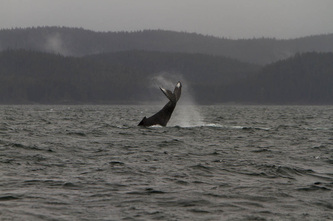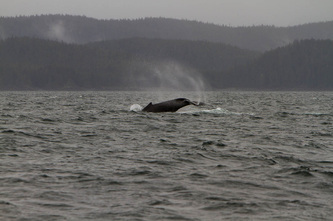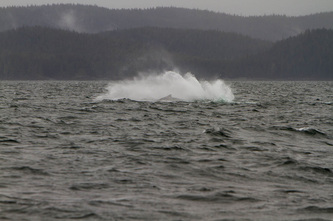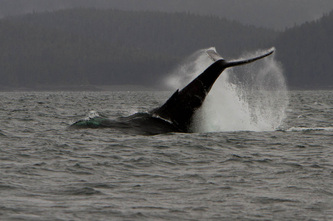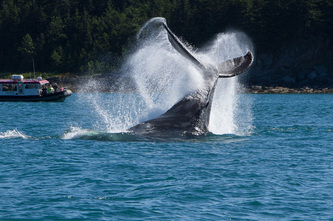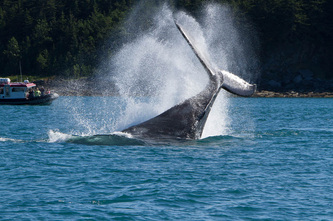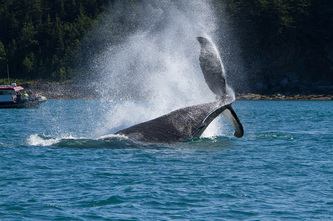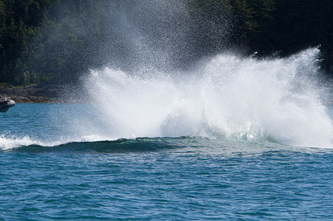Peduncle Throw
Also called rear body throw, tail throw.
The first sequence of three is of an unidentified juvenile in Favorite Channel near Eagle Reef on May 8, 2012 and the second is an unidentified adult in North Pass on July 31, 2013.
The Hawaiian Islands Humpback Whale National Marine Sanctuary: “A whale throws its tail out of the water and in the process, slaps its peduncle (name for the body part connecting the tail) on the surface”. It differs from a tail slap in that much more of the body is involved with much more energy expended. It is often interpreted as being “aggressive” or “defensive”, but this simply may be a projection of human attitude based upon the extreme forcefulness. The juvenile was alone and the adult near perhaps a dozen more whales. The juvenile’s is a “classic” flat slap, while the adult’s is an oblique or sideways slap. Logic suggests a flat slap produces more sound so is an oblique slap “less aggressive?” Nothing in the behavior of these two whales leads me to find either word especially helpful in interpreting the behavior. The only definitive conclusion is that a great deal of physical effort on the part of the whale is required to do a peduncle throw. Since Juneau waters are for eating, often cooperatively, and Hawaiian waters are for mating, perhaps the same behavior means something different here.
The Hawaiian Islands Humpback Whale National Marine Sanctuary: “A whale throws its tail out of the water and in the process, slaps its peduncle (name for the body part connecting the tail) on the surface”. It differs from a tail slap in that much more of the body is involved with much more energy expended. It is often interpreted as being “aggressive” or “defensive”, but this simply may be a projection of human attitude based upon the extreme forcefulness. The juvenile was alone and the adult near perhaps a dozen more whales. The juvenile’s is a “classic” flat slap, while the adult’s is an oblique or sideways slap. Logic suggests a flat slap produces more sound so is an oblique slap “less aggressive?” Nothing in the behavior of these two whales leads me to find either word especially helpful in interpreting the behavior. The only definitive conclusion is that a great deal of physical effort on the part of the whale is required to do a peduncle throw. Since Juneau waters are for eating, often cooperatively, and Hawaiian waters are for mating, perhaps the same behavior means something different here.
